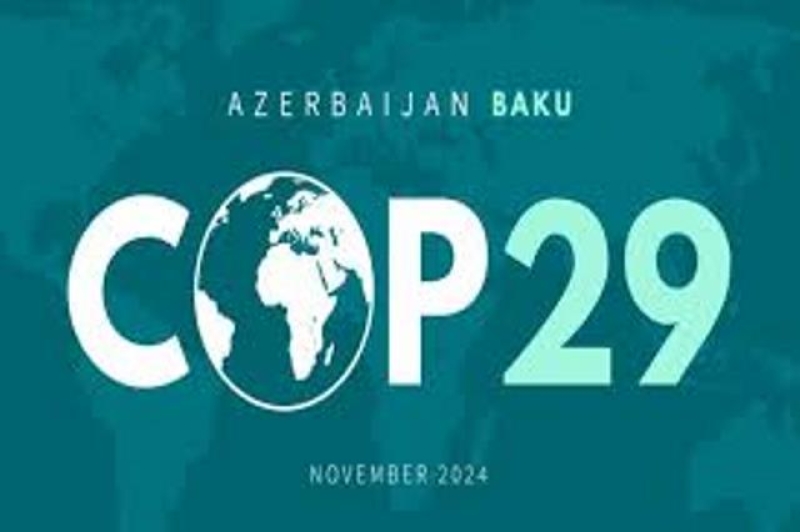- UN Report Calls for New Thinking to Secure a Sustainable Future |
- BNP moves to finalise seat sharing as alliance friction grows |
- BNP plans universal 'Family Card' for all women: Tarique Rahman |
- Tangail saree weaving gets recognition as intangible cultural heritage |
- Chuadanga farmers thrive as cauliflower yields hit new high |
$1 trillion needed in climate cash for developing nations, Experts at COP29

29th edition of the UN climate talks, being hosted in Baku, Azerbaijan
BAKU, Nov 14 (AP/UNB) - The major battle in Baku is over how much rich nations will help poor countries to decarbonize their energy systems, cope with future harms of climate change and pay for damage from warming's extreme weather. The old goal of $100 billion a year in aid is expiring and Baku's main focus is coming up with a new, bigger figure.
A special independent group of experts commissioned by United Nations Secretary-General Antonio Guterres issued its own estimate of costs and finances on Thursday, calling for a tripling of the old commitment.
“Advanced economies need to demonstrate a credible commitment” to helping poor nations, the report said.
A coalition of poor nations at the Baku talks are asking for $1.3 trillion in annual climate finance. The independent experts' report said about $1 trillion a year is needed by developing nations from all outside sources, not just government grants.
The report detailed how expensive decarbonizing the world's economy would be, how much it would cost and where the money could come from. Overall climate adaption spending for all countries is projected to reach $2.4 trillion a year.
"The transition to clean, low-carbon energy, building resilience to the impacts of climate change, coping with loss and damage, protecting nature and biodiversity, and ensuring a just transition, require a rapid step-up in investment in all countries,'' added the report.
For the third straight year, efforts to fight climate change haven't lowered projections for how hot the world is likely to get — and recent developments in China and the United States are likely to slightly worsen the outlook, according to an analysis Thursday.
The analysis comes as countries come together for the 29th edition of the United Nations climate talks, hosted in Baku, Azerbaijan, where nations are trying to set new targets to cut emissions of heat-trapping gases and figure out how much rich nations will pay to help the world with that task.
But Earth remains on a path to be 2.7 degree Celsius (4.9 degree Fahrenheit) warmer than pre-industrial times, according to Climate Action Tracker, a group of scientists and analysts who study government policies and translate that into projections of warming.
If emissions are still rising and temperature projections are no longer dropping, people should wonder if the United Nations climate negotiations known as COP are doing any good, said Climate Analytics CEO Bill Hare.
“There’s an awful lot going on that’s positive here, but on the big picture of actually getting stuff done to reduce emissions ... to me it feels broken,” Hare said.
Climate action is stifled by the biggest emitters
The world has already warmed 1.3 degree Celsius (2.3 Fahrenheit) above pre-industrial times. That's near the 1.5-degree (2.7 F) limit that countries agreed to at 2015 climate talks in Paris. Climate scientists say the atmospheric warming, mainly from human burning of fossil fuels, is causing ever more extreme and damaging weather including droughts, flooding and dangerous heat.
Climate Action Tracker does projections under several different scenarios, and in some cases, those are going up slightly.
One projected track based on what countries promise to do by 2030 is up to 2.6 degree Celsius, a tenth of a degree warmer than before. And even the analysts' most optimistic scenario, which assumes that countries all deliver on their promises and targets, is at 1.9 Celsius, also up a tenth of a degree from last year, said study lead author Sofia Gonzales-Zuniga of Climate Analytics, one of the main groups behind the tracker.
“This is driven highly by China,” Gonzales-Zuniga said. Even though China's fast-rising emissions are starting to plateau, they are peaking higher than anticipated, she said.
Another upcoming factor not yet in the calculations is the U.S. elections. A Trump administration that rolls back the climate policies in the Inflation Reduction Act, and carries out the conservative blueprint Project 2025, would add 0.04 degree Celsius (0.07 Fahrenheit) to warming projections, Gonzales-Zuniga said. That's not much, but it could be more if other nations use it as an excuse to do less, she said. And a reduction in American financial aid could also reverberate even more in future temperature outlooks.
“For the U.S. it is going backwards,” said Hare. At least China has more of an optimistic future with a potential giant plunge in future emissions, he said.
“We should already be seeing (global) emissions going down" and they are not, Hare said. “In the face of all of the climate disasters we’ve observed, whether it’s the massive floods in Nepal that killed hundreds of people or whether it’s the floods in Valencia, Spain, that just killed hundreds of people. The political system, politicians are not reacting. And I think that’s something that people everywhere should be worried about.”

